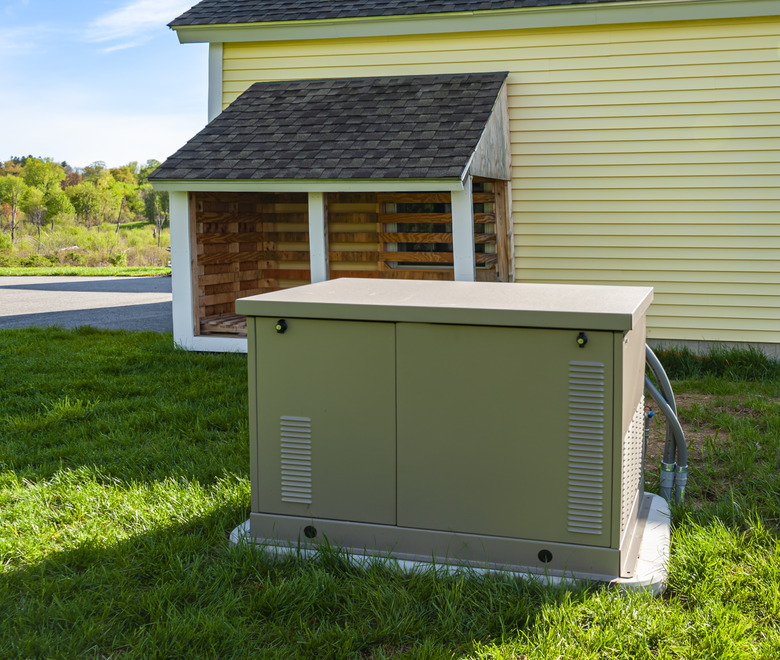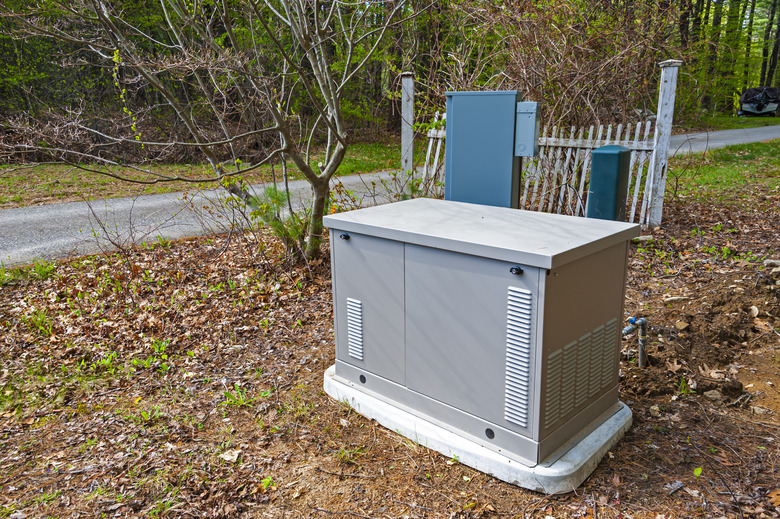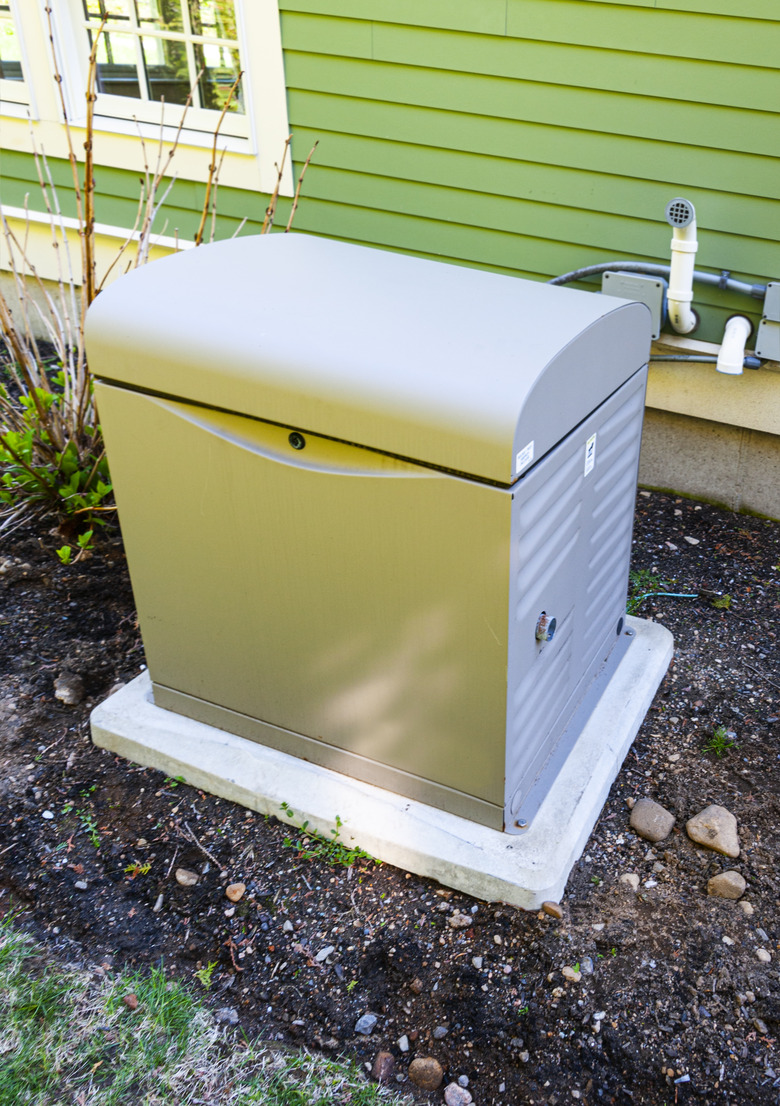What Are Standby Generators? Learn About This Permanent Source Of Backup Power
A home standby generator is more than just a convenience — during an extended power outage, it can be a lifesaver. Modern homes are increasingly dependent on electricity, and refrigerators, HVAC systems and well pumps become inoperable during an outage caused by a disaster or a storm. Losing these essential amenities in extreme weather conditions when you need them most makes life difficult, and for the elderly and disabled, it could be a matter of life or death. In California, where extended outages occur each year in hot summer weather in an effort to prevent wildfires, backup power is a virtual necessity to preserve food and keep water flowing from the well.
As opposed to portable generators, which can be moved into place when needed to power essential appliances by plugging them into the generator's receptacles with extension cords, standby generators are stationary and are permanently wired to the electrical panel, and they come on automatically when the power goes out. A modern standby generator makes noise, but it is a lot quieter than the ones in use 20 years ago. It's also more efficient, and it produces cleaner electricity (which refers to the quality of the electrical signal). The improvement in efficiency means that a contemporary backup generator costs less to run than an older one, but generator power is still too expensive to be a permanent alternative to the power grid.
Tip
A standby generator is a permanently wired structure that provides backup power instantly when the power goes out in your home.
Sizing a Standby Generator
The term "size" doesn't refer to the physical size of a generator but to the power output in watts, and it's one of the most important considerations when choosing a generator. An undersized generator will be overloaded, and while most have an internal breaker that trips when this happens, it's a hassle for homeowners to have to repeatedly reset it, especially given that the generator is usually stationed outside. On the other hand, an oversized generator has a bigger motor that takes more fuel, and the extra power is just wasted if you don't need it.
You can install a generator to power just some circuits and appliances or all of them, but either way, you choose the right generator by matching the output of the generator to the load, and you do that by adding up the power draws in watts of all the appliances you need in an outage. You'll find this displayed on the appliance labels. You must also factor in the amount of power an appliance like a refrigerator or air conditioner needs to start up, which is typically three times the power it draws while it's running. When figuring the total load, multiply the power draw of each appliance that cycles on and off by three before summing it and then add 10 to 20 percent to the total so you have extra power if you need it.
Generator manufacturers, such as Generac, make the process of sizing a generator simpler by including calculators on its website, allowing you to select which appliances you want to power and assigning them a typical value for starting and running power. An electrician who has surveyed your electrical system should have the final word on generator size and can help you decide whether it is better for you to have one that powers your entire house or only selected circuits through a subpanel.
Installation and Operation of a Standby Generator
Unlike a portable generator, a standby generator is installed permanently, and since it's usually outside, most models come with a weatherproof housing that usually includes sound insulation. Before the generator arrives, it's the responsibility of the homeowner to prepare a place for it, which is usually a level concrete pad that may be near the main electrical panel but is more often out in the yard to reduce noise disturbance. Some standby generators are relatively quiet, but considering that the surroundings are also unusually quiet when there's a power outage, the noise a generator makes is hard to ignore.
An automatic standby generator usually comes equipped with an automatic transfer switch (ATS), which monitors power from the main panel and switches on the generator when an incoming signal falls below its preprogrammed threshold. A few seconds before it switches on the generator, the ATS disconnects the panel from utility power, which is a safety precaution to prevent injury to workers who may be servicing the lines to restore power. A transfer switch is a code requirement, so if you purchase a generator without an ATS, the installer has to feed the generator cable through a manual or automatic transfer switch before connecting it to the panel.
Although a whole-house generator can run on diesel, most run on propane or natural gas because these fuels burn cleaner and can be supplied from the home's existing gas supply or, in the case of propane, from a large tank. The installer connects the gas lines as part of the setup procedure. On average, an 8 kW diesel generator uses about 3/4 gallon of diesel fuel per hour, and a comparable natural gas one consumes about 118 cubic feet per hour, which costs roughly the same. A 6 kW generator that runs on liquid propane uses about 1 1/2 gallons per hour and costs more than twice as much to run as the other two types.
Generators and Total Harmonic Distortion
Generator power isn't as clean as utility power, which isn't to say that utility power comes from green energy (which it might) but that the waveform from the power company is closer to a pure sine wave than that from a generator. The total harmonic distortion (THD) of a generator's output is the degree to which the signal varies from a pure sine wave, and THD matters, especially if you need to run sensitive electronic equipment. The electronic controls on many everyday appliances, such as a gas dryer or air conditioner as well as controls for powered gates and security systems, won't work if the THD of the generator output is too high.
Inverter generators have the lowest THD, often in the range of 3 to 4 percent, but the largest inverter generator has an output of only 6 to 8 kW, which is too small to power the whole house. The best THD you can expect from a large generator that can be permanently connected to the electrical panel is around 9 or 10 percent, and some models, particularly those with diesel engines, can have a THD around 25 percent. If you plan to operate computers, routers and electronic equipment during a power outage, look for a generator with the lowest possible THD. You'll find this listed in the generator's specifications.
Standby Generator Test Mode
As everyone with a lawn mower knows, the longer you leave a fuel-burning engine idle, the more likely you are to have problems starting it. Engines seize up over time, and fuel goes bad, although deterioration isn't usually a problem when the fuel is propane or natural gas. To prevent the unit from failing to start in an emergency, standby generators typically start up automatically and run in test mode once a week. Test mode doesn't last long — typically about 10 minutes — and although it offers peace of mind to homeowners, it can be disturbing, which is why manufacturers continue working to minimize the noise.
Standby Generator Smart Features
More and more amenities in the modern home include wireless features, many of which can be controlled through the internet, and generators are among them. Some of Kohler's models come with Ethernet ports that allow them to be connected online, and using dedicated software, homeowners can receive alerts when the generator switches on even if they aren't at home. They can run remote diagnostic tests on the generator to be sure it's ready to go in the event of an impending storm without having to physically inspect the unit.
The Generac smart management module (SMM) is an interesting add-on for the technologically inclined homeowner looking for added convenience, control and efficiency. Working in conjunction with the transfer switch of compatible generator models, the SMM monitors the circuit to which it is connected and supplies power to the circuit only when needed. You can install up to eight SMMs on any given generator and monitor and control them remotely to prioritize power to the circuits that need it most, thus allowing the generator to work more efficiently and save fuel while reducing the likelihood of overloading.
Avnet's smart diesel monitoring solution performs a similar function for diesel generators. Sensors installed on the generator send information to a central monitoring station that the homeowner can access through an internet-based app. The app allows the homeowner to turn the generator on and off, schedule run times and do health checks on the generator system from a mobile device. If the sensors detect a fault, a warning email is sent to the user, and alarms are sent to the central monitoring station.
Get the Most From Your Generator
Just like a car, a generator has an internal combustion engine, but instead of propelling anything forward, the sole purpose of the engine is to spin a rotor that generates electricity like a car's alternator. A car runs its best when you change the oil and clean or replace the air filters regularly, and so does a generator. These maintenance tasks should be performed every 50 to 200 hours of running time.
If you don't have a smart system to monitor the power supplied to different parts of your house, you can help your whole-house generator work more efficiently during an emergency by unplugging appliances and equipment you don't really need, such as auxiliary water heaters and extra microwaves, and turning off lights you don't need. That way, you'll be sure to have power for the things you do need, such as the water pump, sump pump and refrigerator.
If the power is off for several days and the weather isn't too cold, consider turning the generator off when you go to bed. The food in the fridge won't go bad overnight, and you'll save eight to 10 hours of fuel, wear and tear to the generator and also save your nerves (as well as those of your neighbors).
References
- Norwall Power Systems: How it Works: The Components of a Standby Generator
- Santa Energy: How Much Gas Will Your Generator Use?
- Generator Bible: The Origin of Harmonics & Their Effect on a Power System
- Avnet: Smart Diesel Generator Monitoring
- Norwall Power Systems: Generac Smart Management Modules SMM | 7000


